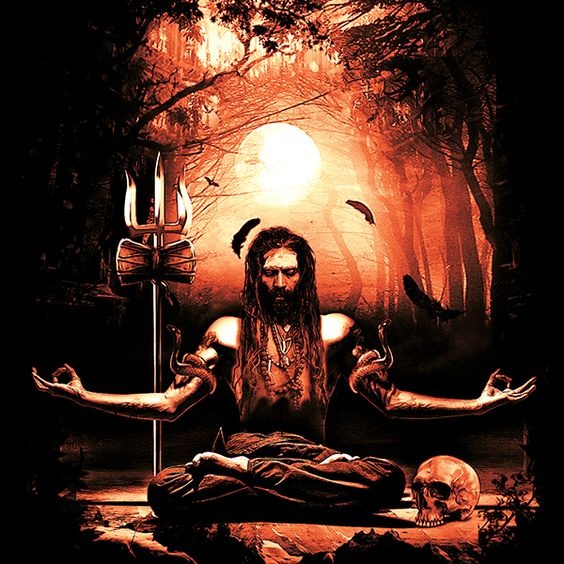“Placing and implementing black magic is a suicide that results in hell.”
― Ehsan Sehgal
You must have heard of Ajay Devgn’s recent sensation Shaitaan, a movie based on black magic. I got the creeps within a few minutes into the film, which was deeply unsettling. It focuses on a young girl who comes under the influence of a mysterious man.
The film is all about how he uses Vashikaran, one form of Black Magic, to control her mind and subdue her to his will, wreaking havoc on her family. The imagery is frightening and can make you cower in your seat. It reminded me of another movie, Hereditary, which had similar effects.
Both films, more or less, deal with the same concepts of occultism and black arts. While one is deeply rooted in Indian practices, the other waters down to the Westernized aspect of black magic.
What really hooked me was how makers dealt with the idea that magic is powerful; it can become white or black depending on the individual who uses it.
Why Black Magic, though?
Any individual who resorts to Black Magic does it for two reasons – jealousy and revenge. The world as we perceive it is the reality, and all realities run on dualism. If there is good, there ought to be bad.
Ultimately, if a Tantra Upasana brings you closer to the divine, it also opens the portals for other entities to prey upon you. But that does not give you the leeway to harm others or inflict pain upon them.
With its bizarre rituals and powerful enchantments, black magic holds a strange fascination for many. For one, the results are instantaneous. Black magic becomes a tool if you wish ill upon your enemies or someone you envy or despise. You cast some voodoo spells on them, and almost immediately, you see them suffer.
Second, when you harness its power, you think you become invincible and enjoy that powerplay. Third, you get everything you wish for – money, fame, reputation, recognition, and health – but at a cost.
What Happens to Black Magic Practitioners? Where Does it All End?
When a tantric practices tantra, he gains a speck of his ishta devata’s power, and suddenly, everything around him feels different. He knows he has gotten some supernatural powers; he can manifest whatever he desires.
Now, if he becomes greedy, that’s a problem. Greed paves the way for misuse or abuse of power, a path fraught with peril and darkness. Once you go down this rabbit hole, there is no coming back.
Tantrics and black magic practitioners exploit five significant powers – Vashikaran (controlling people’s minds), Akarshana (attraction), Uttchatana (sending away the enemy or making them mad),
Vidweshanam (creating discord between enemies), and Marana (killing the enemy) – to manipulate the energies of the universe and bend others to their will.
Any practice that goes against the laws of nature will have its consequences. There is always a price to pay for tampering with forces that one cannot control. So, what happens to tantrics who cast black magic spells?
Whenever the practitioner utters an incantation or performs a ritual, they willingly expose themselves to malevolent entities hidden in the shadows. The energies they unleash actively distort their soul, stripping away layers of their essence until they resemble empty shells of their former selves.
Their actions attract health issues, emotional turmoil, and a relentless stream of misfortune, all of which haunt their existence. The forces they sought to wield with control now retaliate fiercely, turning against them with a vengeance, leaving the practitioner to face the consequences of their actions.
Even the most skilled tantrics are not immune to the dangers of black magic. In their arrogance, they may believe themselves indestructible, but no amount of knowledge or experience can protect them from the wrath of the dark forces they seek to subjugate.
With each spell cast, they risk unleashing a torrent of destruction upon themselves and those around them.
But perhaps the most terrifying aspect of black magic lies in its ability to unleash mayhem upon innocent victims. The intended targets of these dark spells may suffer greatly, their lives torn apart by forces beyond their comprehension.
Physical ailments, financial ruin, and fractured relationships are a few of the myriad ways black magic’s consequences may manifest in their lives.
Ultimately, the practitioner of black magic is left alone and broken, their soul consumed by the darkness they sought to command. Their fate serves as a chilling reminder of the dangers that lurk in the shadows, waiting to trap those who dare to dabble in the forbidden arts for selfish gains.
No one can use black magic without hurting themselves deeply and making their soul dirty in the process. Those who cause suffering through dark spells will also suffer themselves. Anyone who tries to harm others through magic puts themselves in great danger,
almost like standing on the edge of death’s pit and adding their blood to it. Black magic is a dangerous weapon with sharp blades and poisonous handles. Only someone powerful and full of hate and evil can use it, but even then, they can only doso for a short time.
Always remember that nature is one hell of an accountant. It keeps balancing out our actions with equal and opposite reactions. Why should tantrics exist in the first place? People like us, ordinary people who want extraordinary things and are willing to bend our morals, enable them.
Related watch:
When you try to defy the divine, it hits you back a thousand times more with intensity. You create a new karmic cycle and become a part of the tantric’s karma. Do you think that will end well for you and your future generations? Black magic is not the solution to all your woes.
It is your moral responsibility to understand the difference between right and wrong. It is your dharma to uphold it and live your life with utmost honesty.
To know more about Black Magic, read our blog: Everything You Need to Know About Black Magic

Dr. Manmeet Kumar is a Spiritual Coach who founded Soul Miracles in 2016. She uses her gifts of being a psychic and a medium to enable others to transform their inner core.

